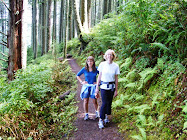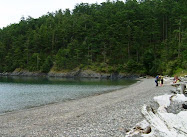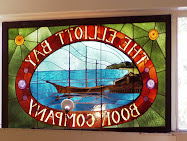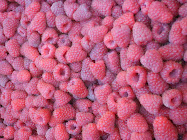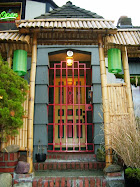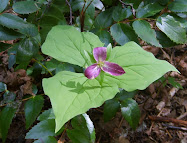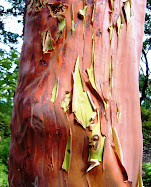 Sometimes you just have to follow the sun. With our decidedly unsummer-like weather this summer in western Washington, I decide in about, oh, 0.05 second to accept a former college roomie's invite to Wenatchee for the weekend. That's east of the Cascade Mountains, the dividing line between cloudy and sunny this summer in the Pacific Northwest.
Sometimes you just have to follow the sun. With our decidedly unsummer-like weather this summer in western Washington, I decide in about, oh, 0.05 second to accept a former college roomie's invite to Wenatchee for the weekend. That's east of the Cascade Mountains, the dividing line between cloudy and sunny this summer in the Pacific Northwest.
In case you don’t already know, the greater Wenatchee area and valley stretching up to Leavenworth is an outdoors lover’s Mecca. (Beautiful Lake Chelan is also not too far away.) Think great downhill, backcountry, and cross-country skiing in the winter. Warmer weather brings ideal conditions for rock climbing, hiking, river rafting, kayaking, waterskiing, bicycling, and more in a warmer, drier climate than the “Coast.”
No wonder my friends who live there are all fit, healthy, and happy.
As with many of my friends, Linda and I bonded over a shared love of skiing and outdoor adventures. So I’m not surprised when she and her husband propose an afternoon bicycle ride.
 Since temps are expected to be over 90ᵒF (a shock to my mossback constitution!), Don suggests we ride a route known locally as the Joe Miller loop, much of which is over 1,000 above the valley floor. When riding counter-clockwise from Wenatchee, this roughly 25-mile loop rises steadily, then steeply up to a plateau in Stemilt Basin.
Since temps are expected to be over 90ᵒF (a shock to my mossback constitution!), Don suggests we ride a route known locally as the Joe Miller loop, much of which is over 1,000 above the valley floor. When riding counter-clockwise from Wenatchee, this roughly 25-mile loop rises steadily, then steeply up to a plateau in Stemilt Basin.
Many riders go clockwise to avoid the steep hill, but we cheat and drive up to where the route levels out atop the plateau, park the truck, and then start riding. Up here the views up to forested Mission Ridge and down toward the arid Wenatchee Valley are expansive and awesome.
This is orchard country, prime land for growing cherries, apples, pears, peaches, and apricots. So we start out under bright, intense sun on a gentle grade past trees heavy with fat red cherries ready for harvest. To our right the basin drops toward a farm.


“There’s an unofficial longboard race going on, so watch out and keep off the road for a bit,” says a woman standing on the side of the road just as we’re starting up the first hill. We pull over into the shade of ponderosa pines beside the road to watch (ah, relief from the sun, which is zapping me already). Pretty soon leather and helmet-clad guys go whizzing past, bent forward like Apolo Anton Ohno in a speed ice skating race. Those dudes are going scary fast!

After we cycle a bit higher and hit a few sharp switchbacks, a big pickup drives past piled full of the racers heading back up to the starting line. I'm glad to have an excuse for another break (it's the heat!) when we ascend to their start, where racers are lined up for the next run.


"Racers ready!" cries the starter. And they're off in a blur of leather and wheels, tailed by a chaser. A couple more tag-alongs try to join in, but the starter yells them off. "Dudes! Stop! No more!"
For the next half hour we meander along a winding country road past orchards, pine forests, and a few nice views of irrigation lakes and the dusty brown Columbia Basin steppes beyond. Sure there are more than a few potholes, but that’s okay because it’s so nice to be riding along a quiet, scenic road.


Then we emerge back into more orchards and agricultural land. Bucolic farms spread out in patchworks around the valley below, with snow-covered Glacier Peak off in the distance to the northwest.


“Here’s the biggest downhill stretch," says Don. We coast down the sinuous road, hands on the brakes around tight curves, until we come to an intersection with a cute little white clapboard church on a corner. Then we turn right on Joe Miller Road.


From here the grades lessen, but it’s still nice and easy cruising through Malaga past farms and small ranches with horses grazing beneath stunning Columbia River basalt ridges.


Within a few miles we end up down at the Malaga-Alcoa Highway, which flattens out and travels along the Columbia River. Until we got to the highway, I think only two trucks passed us in over an hour of riding! Our last few miles along the highway back to Wenatchee are a slog under the hot sun.

Back in town, I have to rest in the shade to cool down, gulping cold water while Don and Linda drive up to get the truck where we started. This Westside gal is not used to the heat! But a little too much heat and lots of sweat is worth it for this great ride. I earned the calories for my wonderful dinner this evening at Shakti's.
When You Go
If you can, I recommend riding this loop in the morning during the summer. In the fall and spring, I’m sure it’s a spectacular ride. By driving up to the top of the plateau, we cut our ride to a tad over 19 miles. Here’s a map of a slightly longer version of the route, starting in East Wenatchee across the Columbia River.

Here's the route as we did it: Head south out of Wenatchee up the Squilchuck Road towards Mission Ridge. About 4 to 5 miles on, turn left on Wenatchee Heights Road and go up the steep hill. We parked and started at the top of the plateau across from funky sign pictured to the right. This road turns into Stemilt Loop Road, which we followed across Stemilt Basin for about 10 miles to the little white Baptist church. Take a right down to Joe Miller Road, winding down several miles to West Malaga Road, which we followed to Malaga-Alcoa Highway (mostly flat along the river), and then back to Wenatchee along the highway.

















































